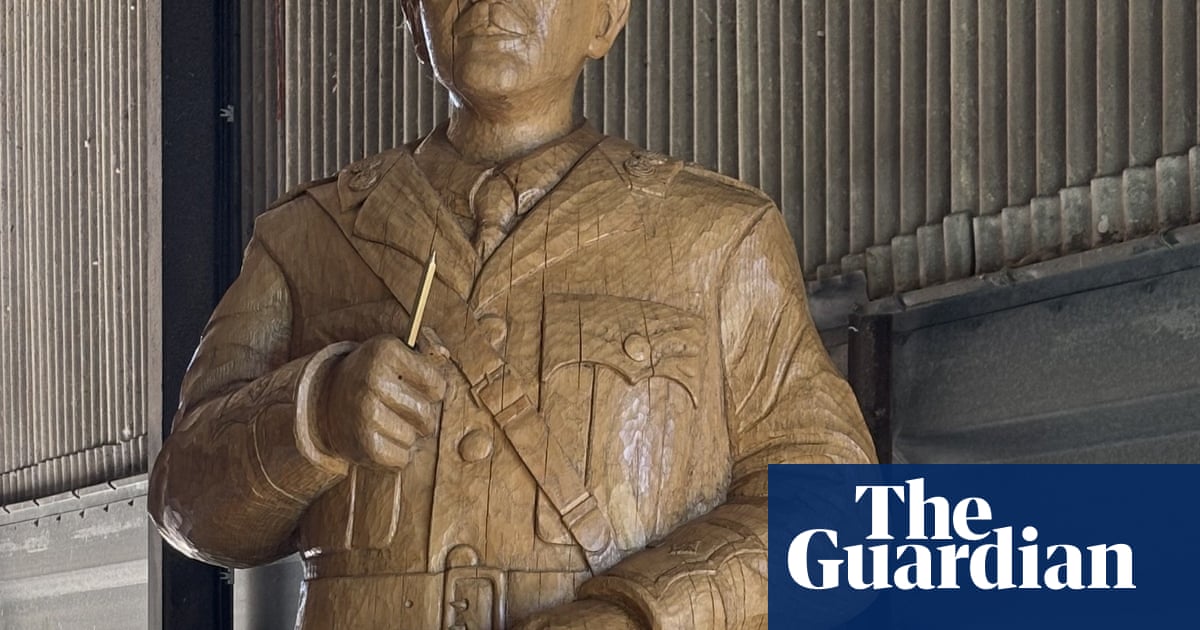Wooden carved statues ofJRR Tolkienand his wife, Edith, will be unveiled in an East Yorkshire village next month, celebrating the area’s influence on the writer.
Tolkien spent nearly 18 months in Hull and East Yorkshire while recovering from trench fever during the first world war, and the area’s landscape isbelieved to have inspiredhis works, including The Lord of the Rings and The Hobbit.
The statues, set to be unveiled on 6 June in the village of Roos, nod to an event of summer 1917, when Edith danced for the writer in a wood. This moment inspired the story of Beren and Lúthien which appears in the Silmarillion, a collection of stories about the history of Middle-earth.
“The newly pregnant Edith danced for her husband in what he called in later writings ‘a hemlock glade’,” wrote Liz Boulter in aGuardian pieceabout Tolkien’s connections to the area in 2022. “Experts agree that this was Dent’s Garth, a wood near the village, which still has a glorious understorey of frothy cow parsley.”
The statues are located near the wood, which “curves around two sides of Roos’ 13th-century church, with a yew avenue and the remains of a Norman watchtower.”
Edith’s dance “inspired an essential part of what would become The Silmarillion: the tale of elf-maiden Lúthien, whom mortal hero Beren first spies in a sylvan glade. The star-crossed lovers are reflected in The Lord of the Rings’s Aragorn and Arwen.”
Sign up toBookmarks
Discover new books and learn more about your favourite authors with our expert reviews, interviews and news stories. Literary delights delivered direct to you
after newsletter promotion
One statue depicts a young Tolkien standing about eight and a half feet high, while the second, beside it, shows Edith dancing in silhouette etched into a thick oak slab. The statues were created by Lincolnshire-based artist Allen Stichler using oak from the Sotterley Estate in Suffolk.
“These statues aim to honour JRR Tolkien’s profound connection to EastYorkshire, a place that played a pivotal role in shaping the imaginative world of Middle-earth”, said councillor Nick Coultish, cabinet member for culture, leisure and tourism at East Riding of Yorkshire Council.
“The unveiling of these statues stands as a tribute not only to his time here during the first world war but also to the lasting impact this beautiful landscape had on his creativity. Tolkien found inspiration for some of his most enduring stories, and it is fitting that we celebrate his legacy in the very place that helped spark it.”
The council hopes the statues will provide an “economic boost” to the Holderness region. They were funded by the council itself and travel company Route Yorkshire Coast.
The new statues are part of the Tolkien Triangle, a series of landmarks connected to the author in the region.
The location of the statues is “the most beguiling spot in the whole Tolkien Triangle” wrote Boulter. “Men were dying in France, but this joyous scene in a sun-dappled copse betokened a future worth fighting for.”
